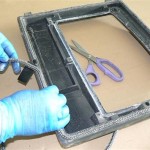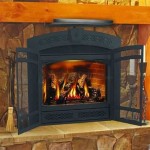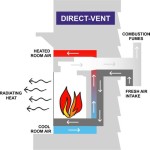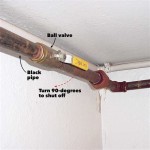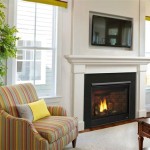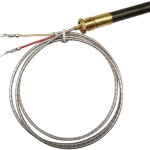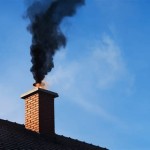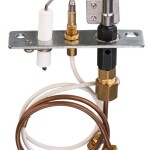Fireplace Chimney Cleaning Frequency: A Comprehensive Guide
Maintaining a fireplace involves more than just enjoying the warmth and ambiance it provides. A crucial aspect of fireplace maintenance is regular chimney cleaning. The frequency with which a chimney should be cleaned is not a one-size-fits-all answer; it depends on several factors, including the type of fuel burned, the frequency of use, and the condition of the chimney itself. Understanding these factors and establishing a proper cleaning schedule is essential for preventing chimney fires and ensuring the safe and efficient operation of your fireplace.
Creosote buildup is the primary reason for regular chimney cleaning. Creosote is a byproduct of incomplete combustion that accumulates inside the chimney flue. It is highly flammable and can ignite, causing a dangerous chimney fire. The Chimney Safety Institute of America (CSIA) recommends that chimneys be inspected at least once a year and cleaned as needed. Determining the need for cleaning usually involves a professional inspection to assess the amount of creosote buildup.
Fuel Type and Creosote Accumulation
The type of fuel burned significantly impacts the rate at which creosote accumulates in the chimney. Different types of fuel produce varying amounts of smoke and unburned particles, which contribute to creosote formation. Understanding the characteristics of each fuel type is crucial for determining an appropriate cleaning schedule.
Burning seasoned hardwood, such as oak, maple, or ash, generally produces less creosote compared to burning softwood like pine or fir. Hardwood burns hotter and more completely, resulting in fewer unburned particles. Seasoned wood, properly dried for at least six months, also burns more efficiently and produces less smoke than green or damp wood. The moisture content of wood is a significant factor influencing creosote buildup. Wet wood burns cooler, leading to incomplete combustion and increased smoke production. Using dry, seasoned hardwood is a key step in minimizing creosote accumulation.
Processed wood products, such as manufactured logs and wood pellets, also have varying creosote production rates. Some manufactured logs are designed to burn cleanly, while others may contain additives that contribute to creosote buildup. Wood pellets, used in pellet stoves, generally produce less creosote than cordwood due to their controlled moisture content and consistent density. However, even with these fuels, regular chimney inspections and cleaning are still necessary.
Oils and other fuels are rarely used in standard residential fireplaces. However, if an unconventional fuel is burned, the chimney cleaning schedule needs to be adjusted accordingly to account for the potentially higher creosote accumulation rate.
Frequency of Fireplace Use
The more frequently a fireplace is used, the more often the chimney will require cleaning. A fireplace used daily throughout the winter months will accumulate creosote much faster than one used only occasionally. Homeowners who regularly use their fireplaces should consider more frequent chimney inspections and cleaning.
For fireplaces used extensively, a cleaning schedule of once or twice per year may be necessary. This ensures that creosote buildup is managed before it becomes a fire hazard. Homeowners who only use their fireplaces a few times a month may be able to extend the cleaning interval, but annual inspections are still recommended. These inspections help to monitor the rate of creosote accumulation and identify any other potential issues with the chimney, such as cracks or obstructions.
The intensity of the fires also plays a role. Hotter fires generally burn cleaner and produce less creosote. However, even with hot fires, regular use will still lead to creosote accumulation over time.
Chimney Condition and Design
The condition and design of the chimney itself can affect the rate of creosote buildup and the ease of cleaning. Chimneys with rough or damaged flue liners tend to accumulate creosote more quickly than those with smooth, intact liners. Cracks or gaps in the flue liner can also allow creosote to seep into the chimney structure, creating a fire hazard that is difficult to detect.
Chimney height and draft can also influence creosote accumulation. A chimney that is too short may not provide adequate draft, leading to incomplete combustion and increased smoke production. Similarly, a chimney with excessive draft can cause rapid cooling of the flue gases, which can also promote creosote formation.
Chimney caps and rain covers are essential for preventing water and debris from entering the chimney. Moisture can accelerate creosote buildup by creating a damp environment in the flue. Debris, such as leaves and twigs, can obstruct the flue and reduce draft, leading to incomplete combustion. Ensure the chimney cap and rain cover are in good condition and free of obstructions.
Regular inspections by a qualified chimney sweep can identify any potential issues with the chimney's condition or design. Addressing these issues promptly can help to prevent excessive creosote buildup and ensure the safe and efficient operation of the fireplace.
In addition to creosote, chimneys can also accumulate other debris, such as bird nests, leaves, and animal droppings. These obstructions can block the flue and prevent proper ventilation, leading to smoke backing up into the home. Regular chimney inspections and cleaning can help to remove these obstructions and ensure that the chimney is functioning properly.
The process of cleaning a chimney typically involves using specialized brushes and tools to remove creosote and debris from the flue. Professional chimney sweeps are trained to perform this task safely and effectively, using the appropriate equipment and techniques to minimize the risk of damage to the chimney. After cleaning, the chimney sweep will typically inspect the chimney to ensure that it is in good condition and free of any potential hazards.
Furthermore, the chimney sweep should provide documentation of the inspection and cleaning, including any recommendations for repairs or maintenance. Maintaining detailed records of chimney inspections and cleanings can be helpful for tracking the chimney's condition and ensuring that it is adequately maintained over time.
Ignoring the need for regular chimney cleaning can have serious consequences. Chimney fires can spread quickly and cause extensive damage to the home. In addition to property damage, chimney fires can also pose a significant risk of injury or death. Preventing chimney fires through regular chimney inspections and cleaning is a crucial aspect of home safety.
Some signs that a chimney may need cleaning include thick, black creosote buildup inside the flue, frequent smoke backing up into the home, and a strong odor of creosote. If any of these signs are present, the chimney should be inspected and cleaned by a qualified chimney sweep as soon as possible.
Choosing a qualified chimney sweep is essential for ensuring that the job is done safely and effectively. Look for chimney sweeps who are certified by organizations such as the CSIA or the National Fireplace Institute (NFI). These certifications indicate that the chimney sweep has met certain training and competency requirements and is qualified to perform chimney inspections and cleanings.
The cost of chimney cleaning can vary depending on factors such as the size and complexity of the chimney, the amount of creosote buildup, and the geographic location. Obtain quotes from several different chimney sweeps and compare their prices and services before making a decision. Remember that the lowest price is not always the best value; choose a qualified chimney sweep who provides thorough and reliable service.
Ultimately, determining the appropriate fireplace chimney cleaning frequency requires careful consideration of several factors, including fuel type, frequency of use, and chimney condition. Regular inspections by a qualified chimney sweep are essential for assessing the need for cleaning and identifying any potential hazards. By following a proper cleaning schedule and maintaining the chimney in good condition, homeowners can ensure the safe and efficient operation of their fireplaces for years to come.

Chimney Cleaning When To Clean A Flue Family Handyman

How Often Do You Need To Clean Your Chimney Other Little Known Facts

How Often Should You Sweep Your Chimney Smart Service

Chimney Sweep Cleaning Wethersfield Glastonbury Hebron Farmington

Do Gas Fireplace Chimneys Need Cleaning Fresh Air

How Often Should You Sweep Your Chimney In Depth Ysis

How Often Should You Clean Your Fireplace Storables
How Often Should You Clean A Fireplace And Why Can Do It Yourself Or Need Professional What Are The Dangers If Neglect Cleaning For Too Long

How Often Should You Sweep Your Chimney In Depth Ysis

Reasons To Hire A Chimney Sweep Brickworks Property Restoration
Related Posts

